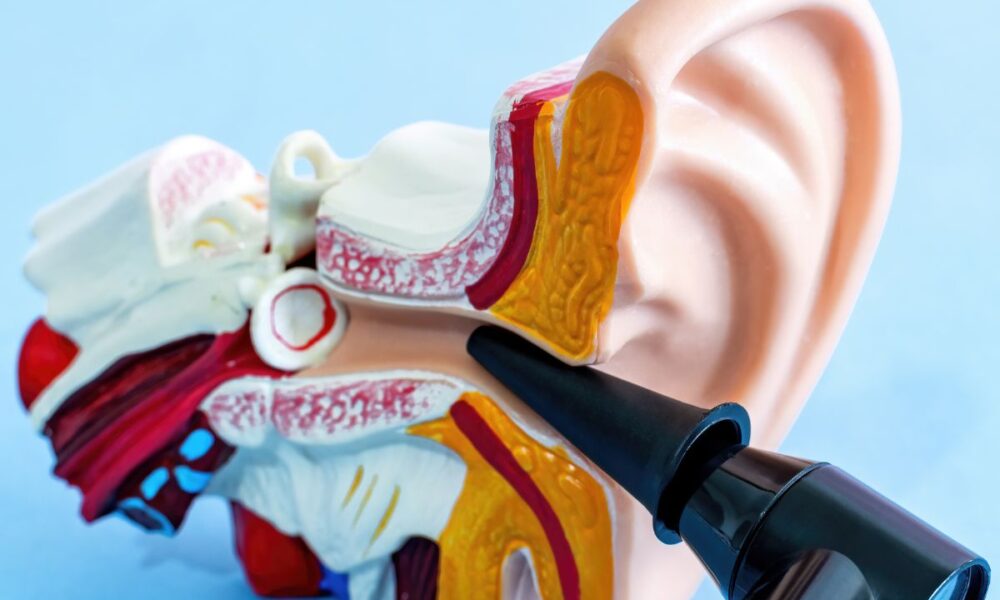Ear drum repair, also known as tympanoplasty, is a surgical procedure used to repair a perforated or damaged eardrum (tympanic membrane). The procedure aims to restore the integrity of the eardrum and improve hearing. Here’s more detail about tympanoplasty:
Symptoms and Causes:
- Symptoms of a perforated eardrum may include:
- Ear pain
- Hearing loss
- Ear drainage (clear, bloody, or pus-like)
- Tinnitus (ringing in the ear)
- Vertigo or dizziness
- Common causes of a perforated eardrum include:
- Middle ear infections (otitis media)
- Trauma to the ear (e.g., from a direct blow to the ear, sudden changes in pressure)
- Chronic eustachian tube dysfunction
- Barotrauma (pressure-related injury, such as during air travel or scuba diving)
- Foreign objects in the ear
- Previous ear surgeries
Treatment:
- Tympanoplasty is typically performed under general anesthesia.
- The surgeon makes an incision behind the ear or inside the ear canal to access the eardrum.
- The edges of the perforation are trimmed, and the eardrum is carefully repaired using graft material.
- The graft material may be harvested from the patient’s own tissue (autograft) or obtained from synthetic materials (allograft).
- The surgeon may also address any underlying middle ear issues during the procedure, such as repairing damaged ossicles (bones of the middle ear) or removing middle ear fluid.
- The incision is closed with sutures, and a dressing may be applied.
- Tympanoplasty can be performed as an outpatient procedure, meaning the patient can usually go home the same day.
Recovery:
- Recovery time varies depending on the extent of the surgery and individual healing factors.
- Patients may experience mild discomfort, ear fullness, or temporary changes in hearing after surgery.
- Follow-up appointments with the surgeon are necessary to monitor healing and remove any packing or sutures.
- It’s essential to avoid activities that could increase pressure in the ear, such as blowing the nose forcefully or engaging in activities that involve sudden changes in pressure (e.g., flying, scuba diving) during the initial healing period.
- Most patients can resume normal activities within a few weeks, although strenuous exercise and contact sports should be avoided for a longer period to minimize the risk of injury to the repaired eardrum.
Outcomes:
- The success rate of tympanoplasty is generally high, with the majority of patients experiencing improved hearing and resolution of symptoms.
- However, outcomes can vary depending on factors such as the size and location of the perforation, the presence of underlying middle ear disease, and the skill of the surgeon.
- In some cases, additional surgeries may be needed to achieve the desired outcome or address complications.
Overall, tympanoplasty is an effective treatment option for repairing perforated eardrums and restoring hearing function, improving quality of life for individuals affected by ear drum damage. It’s essential to consult with an otolaryngologist (ENT specialist) to determine the most appropriate treatment approach based on individual circumstances.

